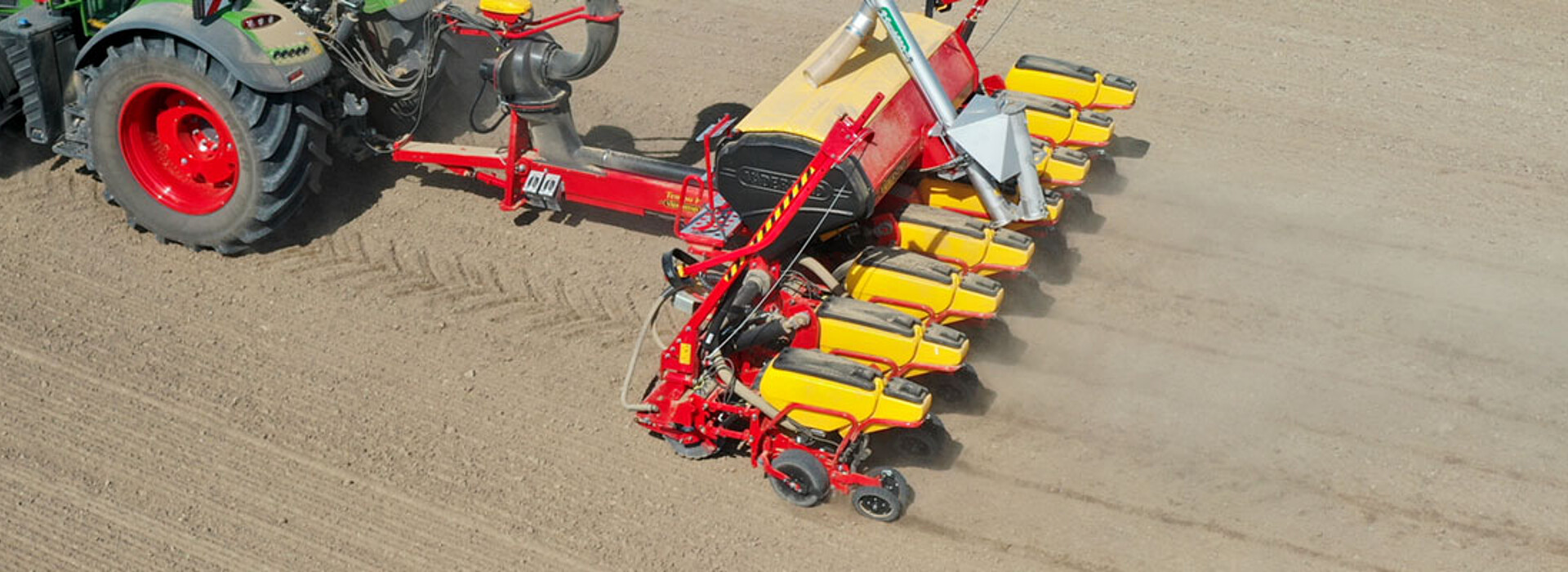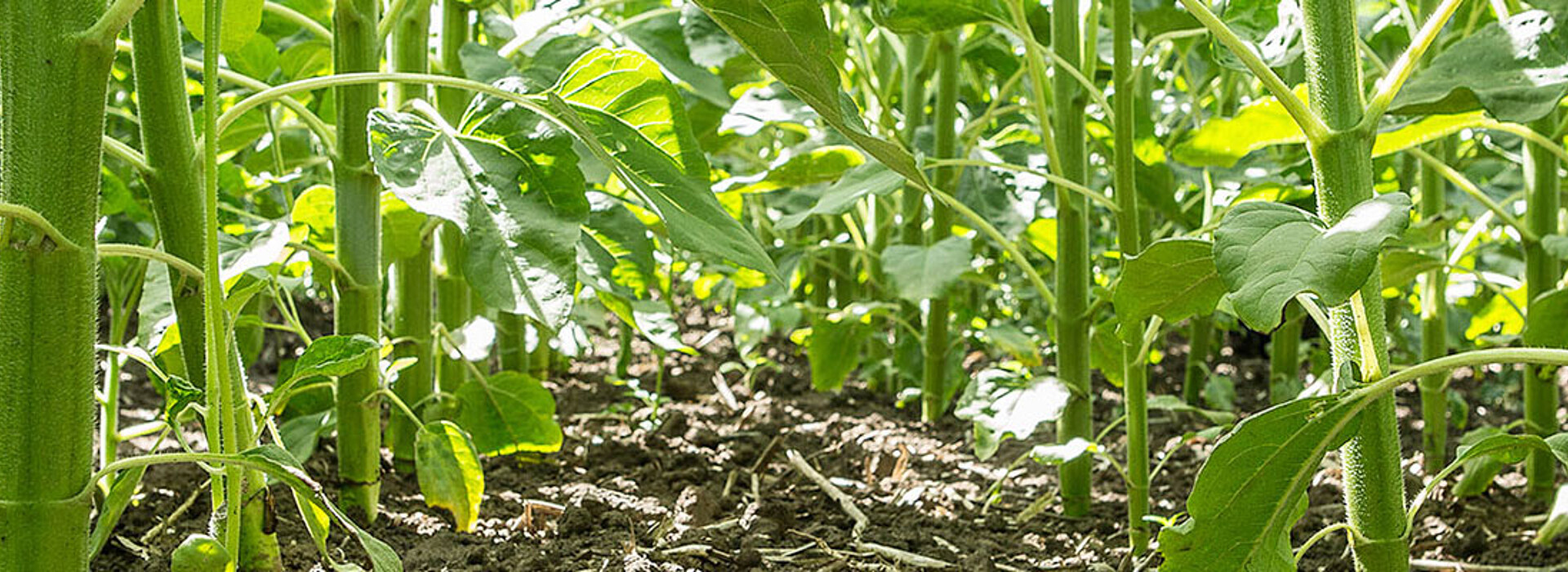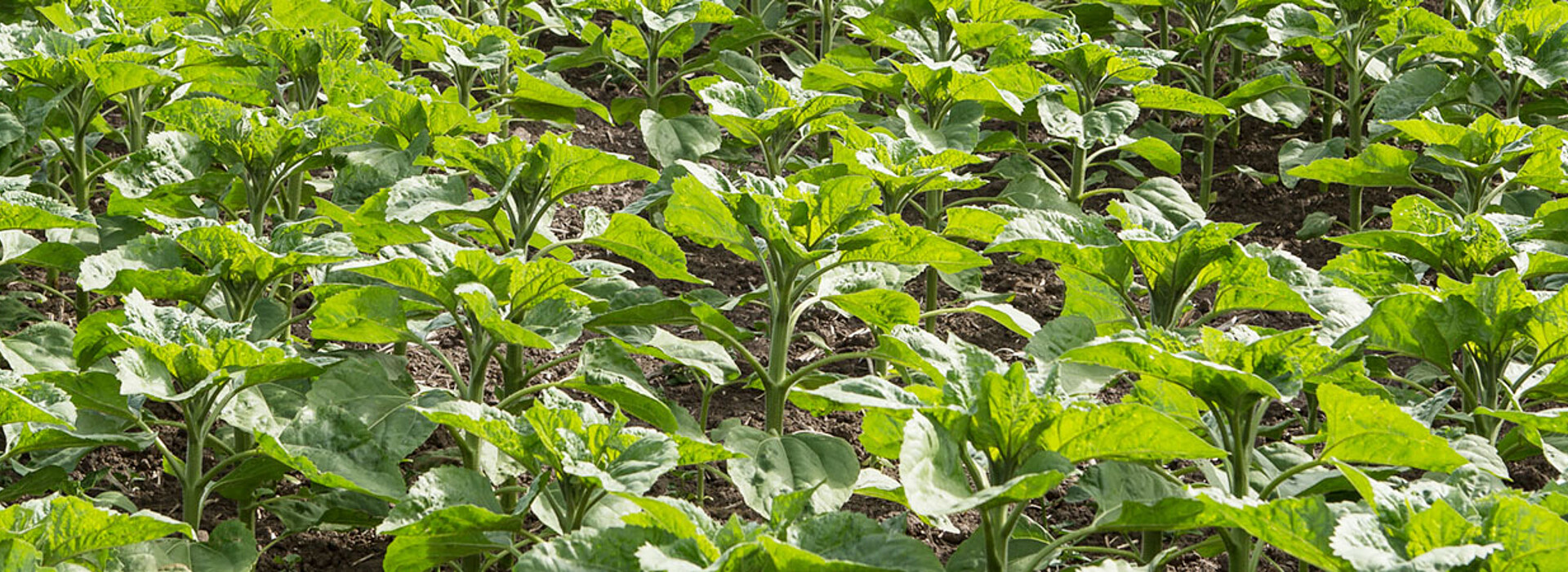Soil
The sunflower forms a deep taproot which, like the sugar beet, can root down to a depth of 3 metres. Sunflower soils should be loosely bedded and easy to penetrate, because the sunflower's taproot does not have very strong penetrating power (avoid compaction). The fibrous root system makes up 50 to 70 percent of the root system and spreads in the top 40 cm of soil depth.
Light to medium soils are suitable for cultivation, e.g. sandy loam to loamy clay soils with a good lime content. Cold, heavy and humusy soils are less favourable, as are sandy soils with low water-holding capacity.
Previous crop
Sunflower itself is considered a good preceding crop. It leaves behind a good soil coagulum and a lot of plant residues for a favourable humus balance.
- Cultivation breaks of 4 to 5 years should be observed, as sunflower is not very self-tolerant.
- Suitable preceding crops are cereals, maize and sugar beet.
- Previous crops with high nitrogen supply should be avoided (legumes).
- Rape is a Sclerotinia host plant and should also be avoided as a preceding crop.
- As a summer crop, sunflower is suitable for problem sites of wild oats.
Water supply
The sunflower is preferably cultivated on the drier sites, because it needs only 400 to 450 mm of water in the vegetation and roots deeply.
- It reacts sensitively to a lack of water, especially in a period before and after flowering, and can react with yield losses.
- Too much soil moisture in the germination and juvenile stage can have an unfavourable effect on root and juvenile development.
- A lot of rain in autumn at maturity and harvest can lead to diseases (fungi, bacteria) and kinking of the stems and baskets.
Sowing time
Sowing usually takes place from mid-April to early May - in the period after sugar beet and before maize. The soil temperature should have reached approx. 8° Celcius.
► Maize seeding technology can be used for sowing.
After sowing, a warm, dry following weather is favourable for rapid germination and young plant development. The small plants tolerate frost up to -5 °Celcius.
Seed

Sunflower seed is packed in units of 150,000 grains. This corresponds to a cultivation area of 2 to 3 hectares of sunflowers, depending on the desired stand density.
The thousand grain weight (TCG) varies between 60 and 70 grams.
The germination capacity is > 90 percent.

Sunflower seed
Beginning of flowering
Stage 60/61: Flowering lasts 5 to 12 days.

Sunflower seed
Cross section through the flower
The basket with the tubular flowers become visible.

Sunflower seed
Fruit development
Around the middle to end of July the sunflowers flower, and in August they begin to ripen.

Sunflower seed
Seed maturity
A residual grain moisture of 9 percent is optimal for harvesting.

Sunflower seed
Untreated sunflower seed
Sunflower seeds are available in shades from brown to black, and there are also striped seeds.

Sunflower seed
Treated seed
The seed is treated with a fungicide.
Seedbed
The sunflower seeds are placed in single seedbeds at a depth of 3 to 5 cm:
► heavier soils 3 cm depth
► lighter soils 5 cm depth.
The placement depth should be chosen according to the soil or soil warming. A good seedbed preparation comparable to the sugar beet seedbed promotes uniform field emergence and plant stand.
Crop density
Sunflowers are sown at 45 / 50 cm or 70 / 75 cm row spacing. A row spacing of 45 or 50 cm is common practice in Germany. For the development of uniform and vigorous plants and baskets, spacing as evenly as possible is optimal.
The stand density should be 50,000 plants on lighter/weaker sites, on better soils 75,000 plants per hectare can be grown. The density of the crop, or the spacing between plants, affects the height of the individual plants and their stability.
| Row width 50 cm | Row width 75 cm | |||||||||||||||||||
|---|---|---|---|---|---|---|---|---|---|---|---|---|---|---|---|---|---|---|---|---|
| Deposit distance cm | 26,7 | 40,0 | 17,8 | 26,7 | ||||||||||||||||
| Deposit distance | 75.000 | 50.000 | 75.000 | 50.000 | ||||||||||||||||
Weed control
- Pre-emergence herbicide treatment is usually sufficient (e.g. 3 - 4 litres/ha Bandur®).
(post-emergence e.g. 2 ltr./ha Fusilade MAX® for standard varieties)
- Herbicide-tolerant (sulfo-/tribenuron-tolerant) varieties: In the 2 - 6 leaf stage Pointer SX® in splitting with 2 x 30 g/ha or 1 x 60 g. This can be useful on thistle sites or if drought impairs the pre-emergence effect or it is too late for pre-emergence application.
- Mechanical weed control is also possible, even at a later stage.
Fertilisation
Since sunflowers need a good soil structure, make sure that the soil has a sufficient/balanced supply of lime.
| Nutrient requirements | Fertilisation | ||||||
| Macronutrients | Nitrogen | low | 50 - 60 kg/ha | ||||
| Phosphorus | medium-high | 50 - 80 kg/ha | |||||
| Potassium | high | 120 - 240 kg/ha | |||||
| Magnesium | medium-high | 20 - 30 kg/ha | |||||
| Sulphur | medium-high | 20 - 30 kg/ha | |||||
| Micronutrients | Boron | high | up to 2 kg/ha (as needed) | ||||
| Manganese | important | ||||||
Potassium fertilisation improves the stability and the oil content. | |||||||
► The sunflower also has a high nutrient appropriation capacity due to its root system and leaves the field with little nutrient residue. If the sunflower chaff remains in the field, then a large proportion of the nutrients potassium and phosphorus are returned.
N fertilisation
The sunflower has a low nitrogen requirement! Usually, sufficient nitrogen is provided by the Nmin content. The requirement is 50 to 60 kg/ha, the sunflower should not receive more than 100 kg N incl. Nmin content. Organic fertiliser should be applied a few weeks before sowing, as nitrogen release may be delayed. Too much nitrogen delays maturity, increases susceptibility to diseases and can have a negative effect on standability.
Sunflower leaves soils with low residual nitrogen levels.
Your contact for Sunflower International

Manuel Falcon Martin
Global Sunflower Crop Leader




